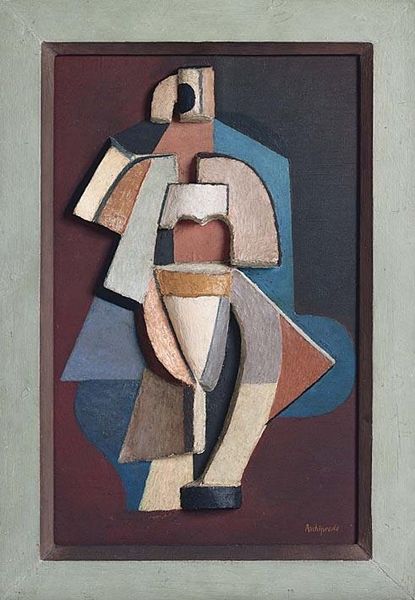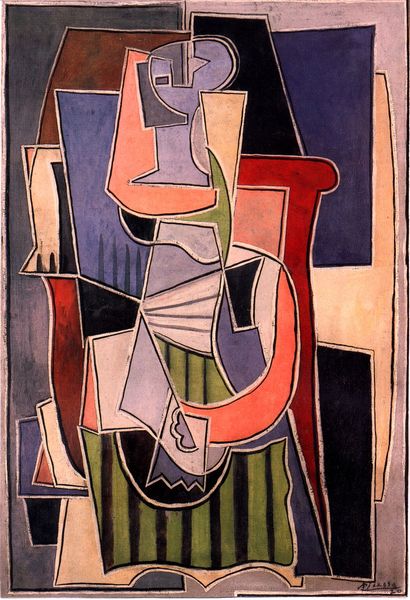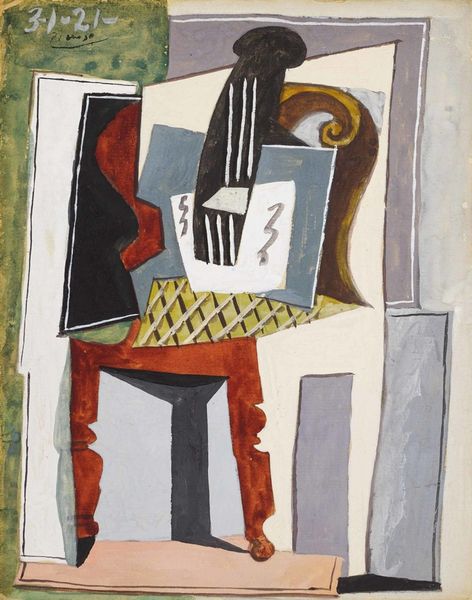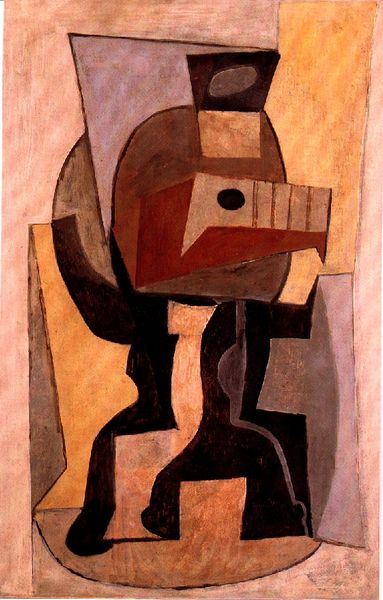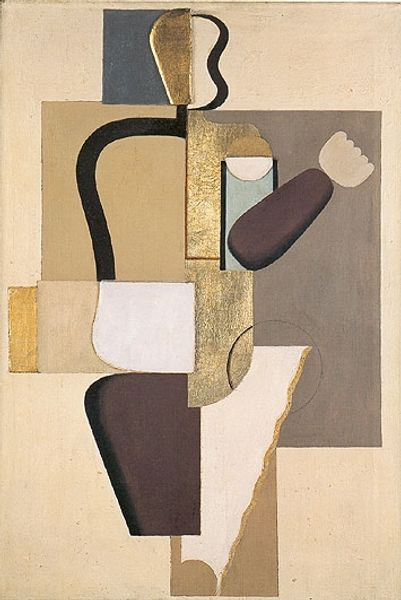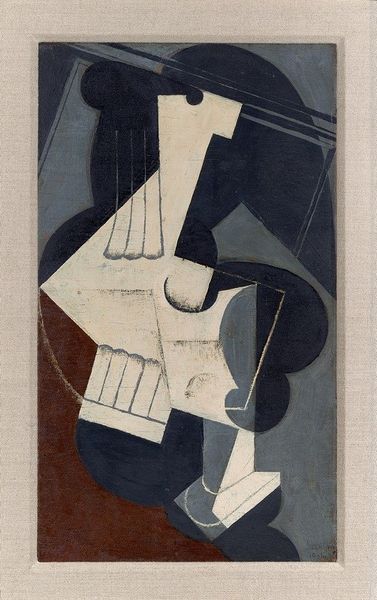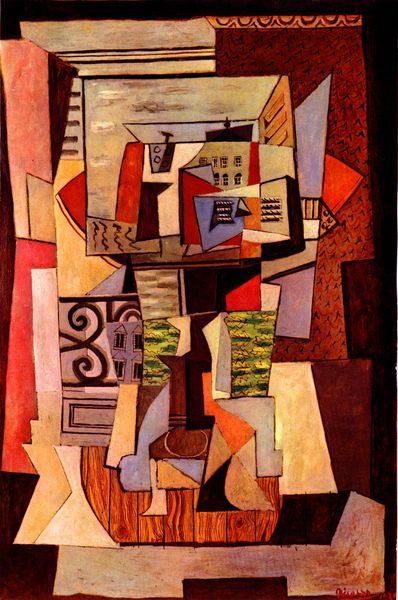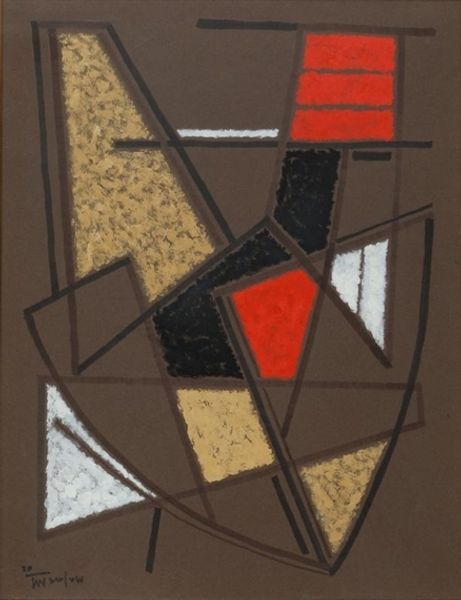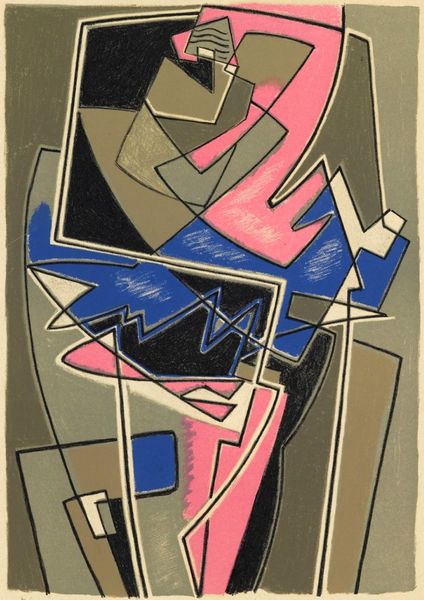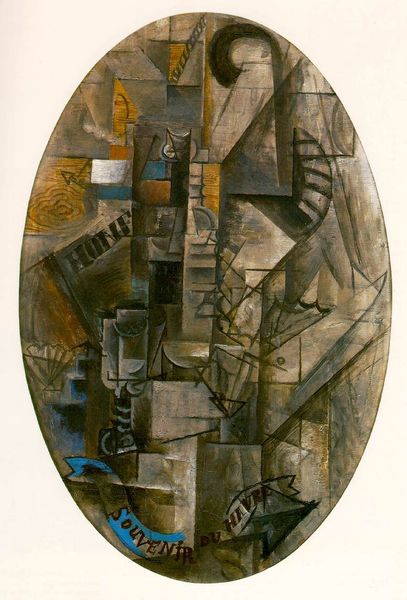
painting
#
cubism
#
painting
#
pop art
#
abstraction
Copyright: Public domain US
Curator: Instantly, the chromatic intensity strikes me. Red, black, tan, and some grayscale all bound together with a striking effect of crisp lines. Editor: We’re looking at Picasso's "Guitar on pedestal," crafted in 1920, rendered in a painting with a cubist style, the abstracted theme sings through. It’s such a strong composition that continues his exploration into abstraction, moving toward this distinct pop-art visual approach. Curator: Do you mean, this is Pop Art before its time? Perhaps it is. Thinking symbolically, musical instruments, especially guitars, hold such emotive, often romantic meaning. In Picasso's hands, they get deconstructed and reconstructed as testaments to human relationships that go back to the troubadours. The placement of the guitar seems symbolic, but I cannot yet quite define it, though it calls forth echoes. Editor: Observe the flattening of perspective, almost as if several views are compressed into a single plane. You have the clear presence of planes overlapping; they dance with light and shadow, the use of color isn't purely representational. How does it further abstract meaning, then? Curator: Guitars as personal symbols, right? Now that I am examining this image more fully, I am thinking about the cultural memory attached to stringed instruments from Antiquity and up through its prevalence during The Renaissance. By stripping down the form to these stark geometries, Picasso challenges our ingrained associations. It pushes us to experience the object anew. Editor: Yes! We are forced into active participation. It invites a reassessment of form and symbol. The material reality asserts itself through a reductive yet powerful vocabulary of line and color. Curator: The pedestal grounds the instrument as if placing the past, or this part of our heritage, into the here and now, but it isn’t an artifact in the classic sense because the geometry removes it. This guitar sings with meaning but in this frozen instant seems silent. The cultural and the psychological seem to stand still in that case. Editor: Agreed, a testament to cubism’s enduring legacy and influence. It provides a sharp aesthetic jolt of something familiar with a novel composition style that pushes for an examination of structure, form, and substance. Curator: Thank you, I understand what is resonating for me much better now! Editor: My pleasure, thank you for these resonant observations.
Comments
No comments
Be the first to comment and join the conversation on the ultimate creative platform.
